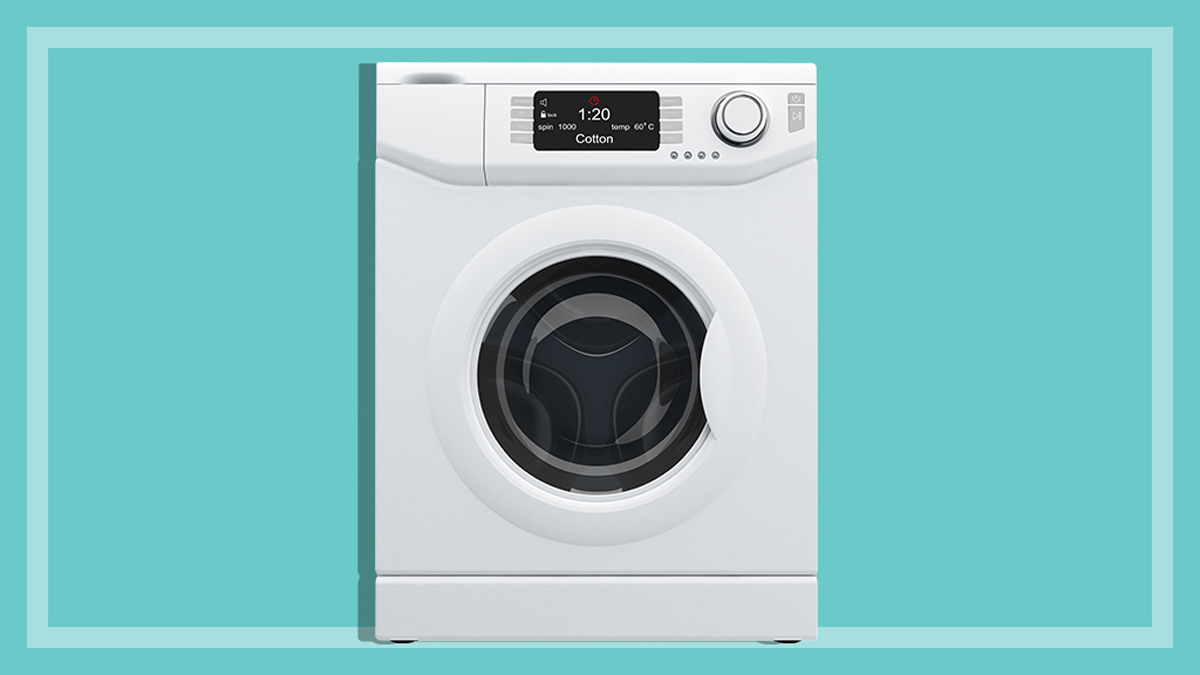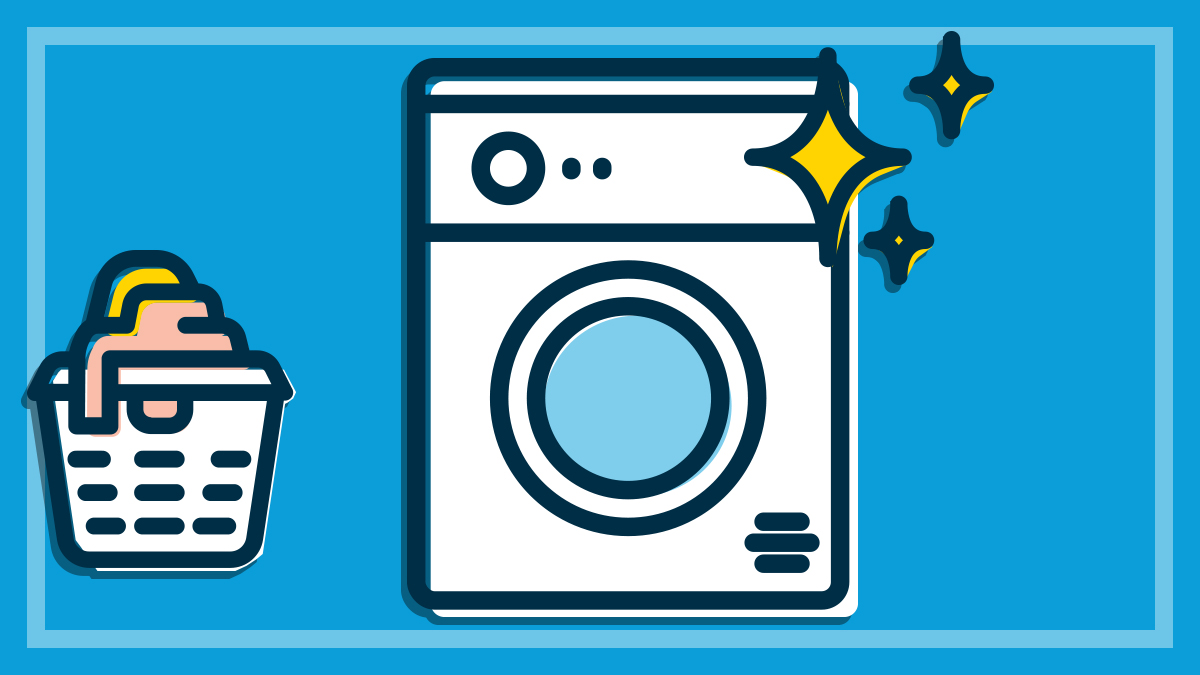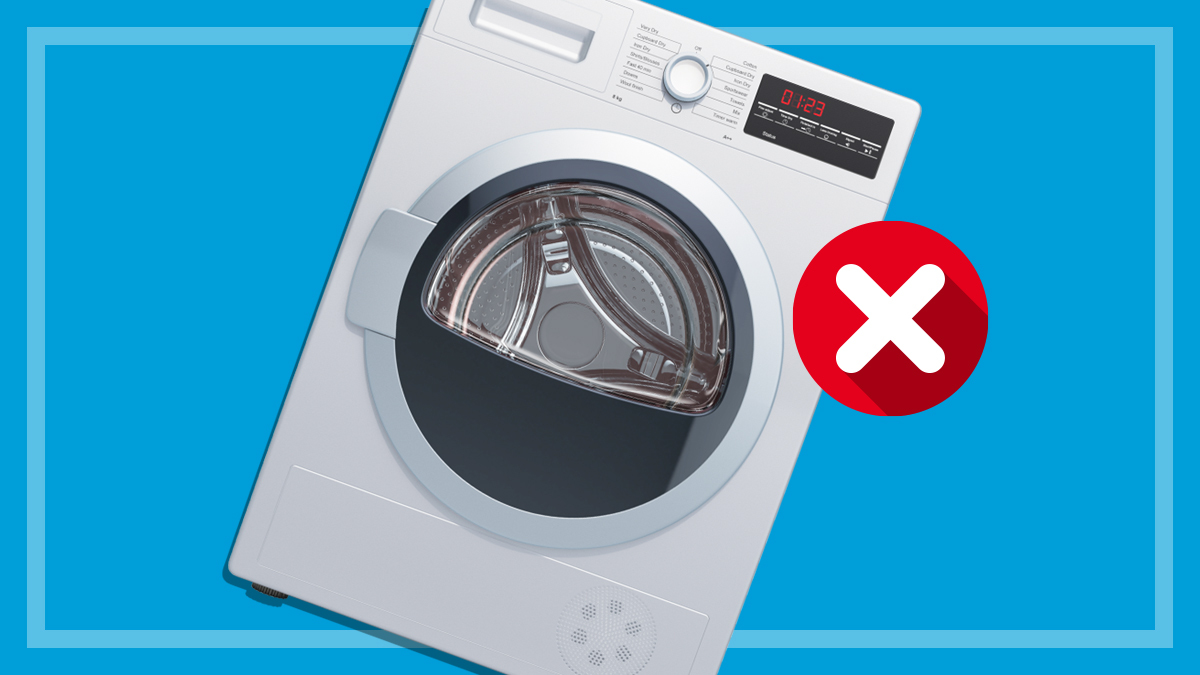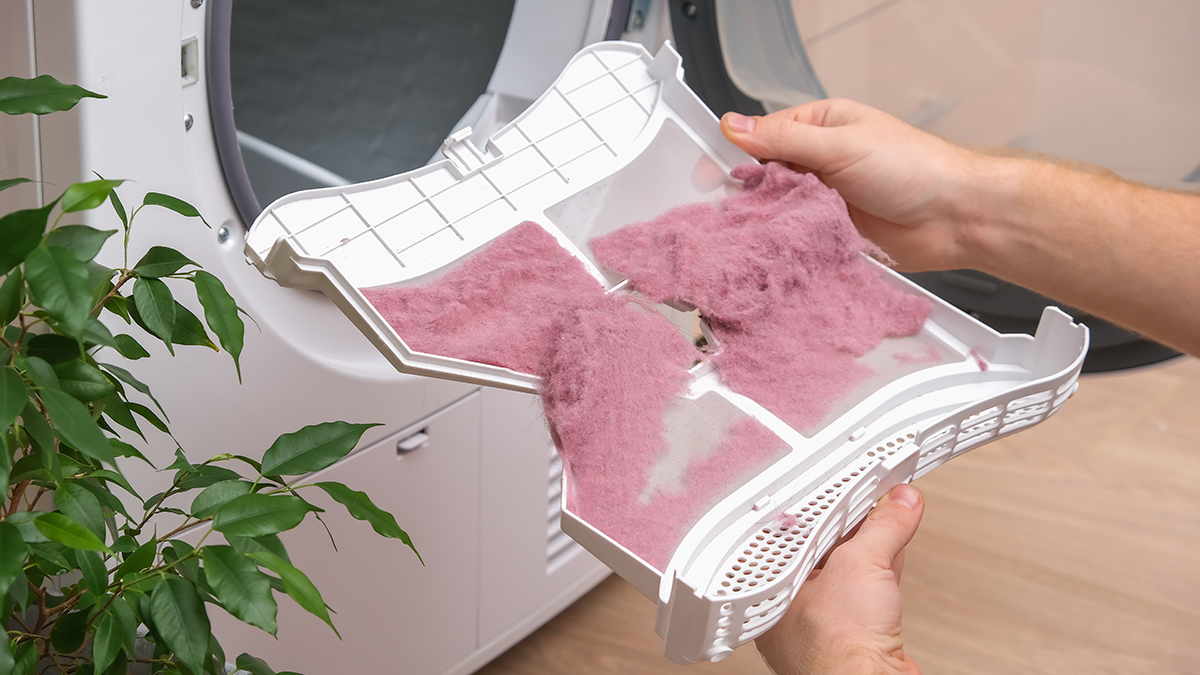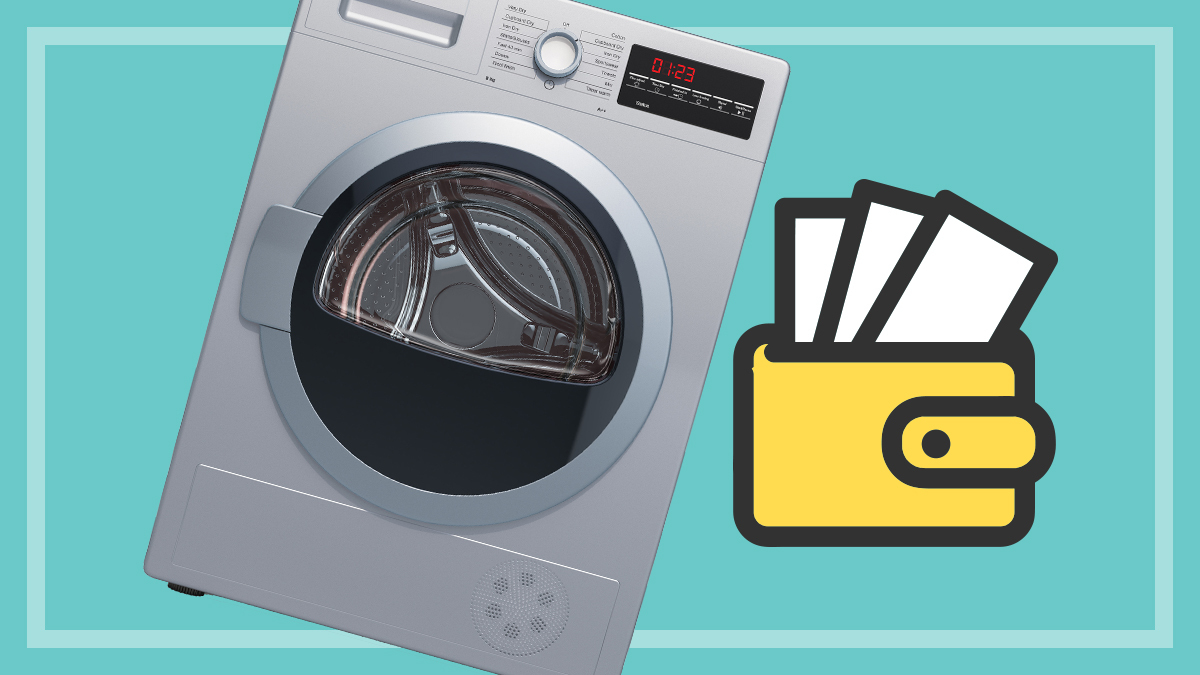Get our independent lab tests, expert reviews and honest advice.
Will a clothes dryer shrink my clothes?
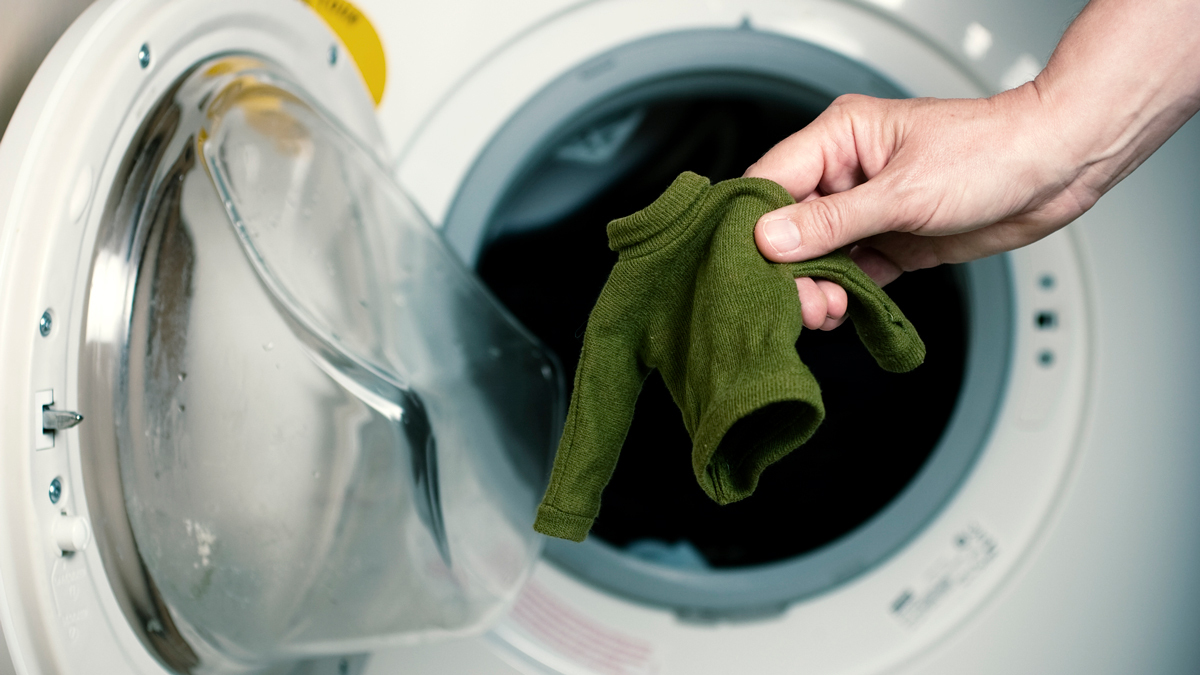
If you’re desperate to wear your favourite shirt but it’s just come out of the washing machine, you’re probably tempted to throw it in the dryer so you can put it on pronto – but should you?
On this page:
- Tips to avoid shrinkage
- Can you fix or unshrink clothes that have shrunk?
- How to tell if your clothes can go in the dryer
- Which type of dryer is better at preventing clothes from shrinking?
- Which clothes materials are safe in a dryer?
Some fabrics are unbothered by the heat of a tumble dryer, but others will turn up their toes unless they’re gently air-dried. It’s important to know which is which before you put on a load.
The key takeaway is: when in doubt, air dry it
To help you avoid a fashion disaster of the shrinkage kind, we asked CHOICE’s resident laundry expert to spill the beans on what can go in the dryer, what never should, and how to use your dryer effectively.
The key takeaway is: when in doubt, air dry it. Your wallet and the environment will thank you for opting for solar-powered drying. Not running your dryer will save you money and won’t shrink your clothes – so you’ll have more cash left over to spend on additions to your wardrobe!
Tips to avoid shrinkage
Your best bet to prevent your laundry shrinking is to always line dry your clothes – but that’s not always possible.
CHOICE laundry expert Ashley Iredale shares his tips on what you can do to prevent your clothes from shrinking in the dryer.
- Always follow the care instructions on the label. Don’t chuck it in and hope for the best!
- Over-drying your clothes can shrink and damage them over time, so check the load to make sure it’s not pumping hot air through already-dry clothes.
- If you have a simple vented dryer that just uses a timer, use the warm setting, not hot, and don’t over-dry your clothes – keep checking them to make sure they’re not being fried.
- For dryers with several program options, choose the most appropriate program for the fabric you’re drying.
- Sort through the load and keep fabrics of similar weight together– for instance, keep sheets together, towels together and clothes together (separated into different weights if needed).
- If you’re using a dryer, use the highest spin speed on your washing machine to remove as much moisture as possible so you don’t need to run your dryer as long.
- If in doubt, don’t put it in the dryer. You might have to wait a while for it to air dry, but it’s worth it to make sure your clothes don’t shrink.
Can you fix or unshrink clothes that have shrunk?
- For woollen jumpers, re-wet them, then pack them out with towels and the like to stretch them back into shape, then leave them to dry flat out of direct sunlight.
- For jeans, squeeze into them, then sit in a warm bath and move around in them to stretch them back out.

How to tell if your clothes can go in the dryer
While the symbols on clothes tags look something like hieroglyphics, they actually contain lots of information about how to care for the fabric.
Learn to identify the symbols for tumble drying and you’ll be able to quickly check if you can throw those new jeans in the dryer, rather than risking it.
Look for symbols that have a square with a circle in it: these relate to tumble drying.
So what do they mean?
- One dot: use low heat.
- Two dots: use medium heat.
- Three dots: use high heat.
- No dots: can be tumble dried, but no specific recommendations for heat.
- An X or cross: don’t tumble dry.
Which type of dryer is better at preventing clothes from shrinking?
There are three main types of clothes dryer: vented, condenser and heat pump. You can learn more about the specifics in our guide to buying the best clothes dryer.
Vented dryers typically have the shortest cycle times of all dryer types, but they do have the potential to over-dry your laundry, which can cause items to shrink.
Condenser dryers and heat pump condenser dryers take a little longer to dry a typical load of laundry because they use lower temperatures than a vented dryer, but this means they’re gentler on your clothes.
Which clothes materials are safe in a dryer?
Here’s what CHOICE’s laundry expert says you can and can’t put in the clothes dryer (after checking the care label first, of course).
|
Fabric/item |
Can it go in the dryer? |
Expert comments |
|---|---|---|
| Acrylic |
Yes |
Only use low heat settings, and don’t leave acrylic clothes in for too long. |
|
Activewear | No | |
|
Bags |
No |
100% cotton bags are okay, but everything else should be air-dried. |
|
Bath mats |
It depends | Cotton bath mats are fine in the dryer, but mats with rubber backing should only be air dried. |
|
Cashmere |
No | |
|
Cotton |
It depends |
Cotton blend fabrics are usually fine, but 100% cotton and loose-woven cotton items are more likely to shrink. Use a lower heat for lighter garments like T-shirts. |
|
Denim |
Yes |
Be cautious about tumble drying stretchy jeans – the Spandex might not like the heat. 100% cotton denim is fine. |
|
Doonas |
It depends |
Polyester and cotton doonas are fine in the dryer. Doonas made of wool should always be air dried. Some feather and down doonas can go in the dryer – check the care label first. |
|
Faux leather/vegan leather | No | |
|
Fur/faux fur | No | |
|
Hosiery (stockings, tights, etc) |
No | |
|
Lace | No | |
|
Leather and suede |
No | |
|
Linen |
It depends |
Pre-washed linen can go in the dryer, but use a low heat or delicate cycle. It’s best to err on the side of caution and air dry linen items. |
|
Microfibre |
Yes |
Use a low heat or cool setting. |
|
Nylon |
Yes |
Use a low heat or cool setting. |
|
Pillows |
It depends |
Polyester pillows can be tumble dried. Use a low heat or cool setting. Check regularly to see if they’re dry. Bamboo and memory foam pillows should not be tumble dried. Some feather and down pillows can go in the dryer – check the care label first. |
|
Polyester |
Yes, but check care label |
Polyester dries quickly so you may not even need to tumble dry polyester clothes. |
|
Rayon |
No | |
|
Sequinned, beaded or embellished clothes |
No | |
|
Shoes |
It depends |
Many dryers come with drying racks, which are a platform that sits inside the dryer and doesn’t spin. These are designed for items like shoes, but not all shoes are suitable. Sneakers and running shoes are often okay. |
|
Spandex and lycra |
Generally not |
Check the care label – some items can go in the dryer, but the higher the percentage of spandex, the more likely it’ll be damaged by the heat. |
|
Silk |
No | |
|
Swimwear |
No | |
| Velvet |
No | |
|
Wool |
No |
Check the label as some wool blends may be okay to dry on a dedicated woollens program. It’s still safer to air dry woollen items to avoid shrinkage. |
Things that should never go in the dryer
Now you’re up to speed with which clothes you can and can’t put in the dryer, here are some items that should absolutely never be tumble dried:
- Clothes that have had flammable materials such as oils or solvents spilled on them: they can combust in the dryer.
- Items of clothing that have rubber or foam attached to them.
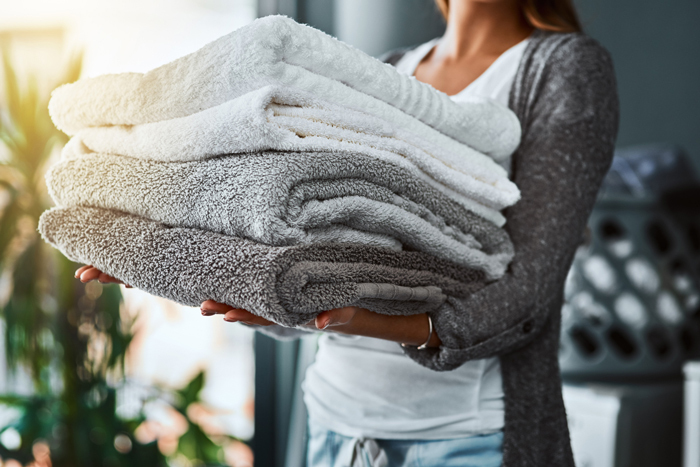
Can jeans go in the clothes dryer?
Denim that’s 100% cotton is pretty durable, so generally it’ll be fine in the dryer. But if your jeans are extra stretchy, the spandex could be affected by the heat. As with anything you’re going to bung in the dryer, check the care label first.
On the flipside, if you actually want to shrink your jeans, put them through a hot wash and then tumble dry the heck out of them. If you want to take the shrinkage to the next level, boil them in a large pot for 20–30 minutes, then put them in the dryer.
Can woollen clothes go in the dryer?
Step away from the dryer with those winter woollies! Wool and clothes dryers just don’t mix.
You’ll want to avoid tumble drying your favourite woollen jumper as it may well irrevocably damage the fibres, says Ashley.
“When wool is spun and made into clothing, the fibres are stretched out and straightened. When you apply heat, that stretch can relax and the fibres can retract, like a recoiling spring,” he says.
“There are ways you can try and stretch them out again, but it’s not always successful and you’re better off avoiding the problem in the first place.”
That said, some dryers do have a ‘woollens’ setting, but Ashley says using it could be risky. “Although woollens settings in dryers are designed to be gentler than the regular settings and use lower heat, you’re safest not to use any heat or mechanical action at all. If you have the option of air drying then it’s better not to risk it.”
Instead, dry your woollen items outside, but not in direct sunlight as this may cause colour fading. Dry in a shaded area and lay the garment flat to ensure the clothing maintains its shape.
Can bras, lingerie and activewear go in the dryer?
Any fabrics that contain elastic materials like spandex and lycra should be kept well away from your dryer. The heat can affect the elasticity, leaving you with saggy knickers and unsupportive bras. And delicate fabrics like lace and silk can snag or be damaged by tumble drying.
Gym clothes are also on the don’t-dry list: they tend to have a high percentage of elastic material so the heat will damage them.
The good news is that the materials used for gym gear tend not to retain moisture, so they should dry quickly on the line anyway.

